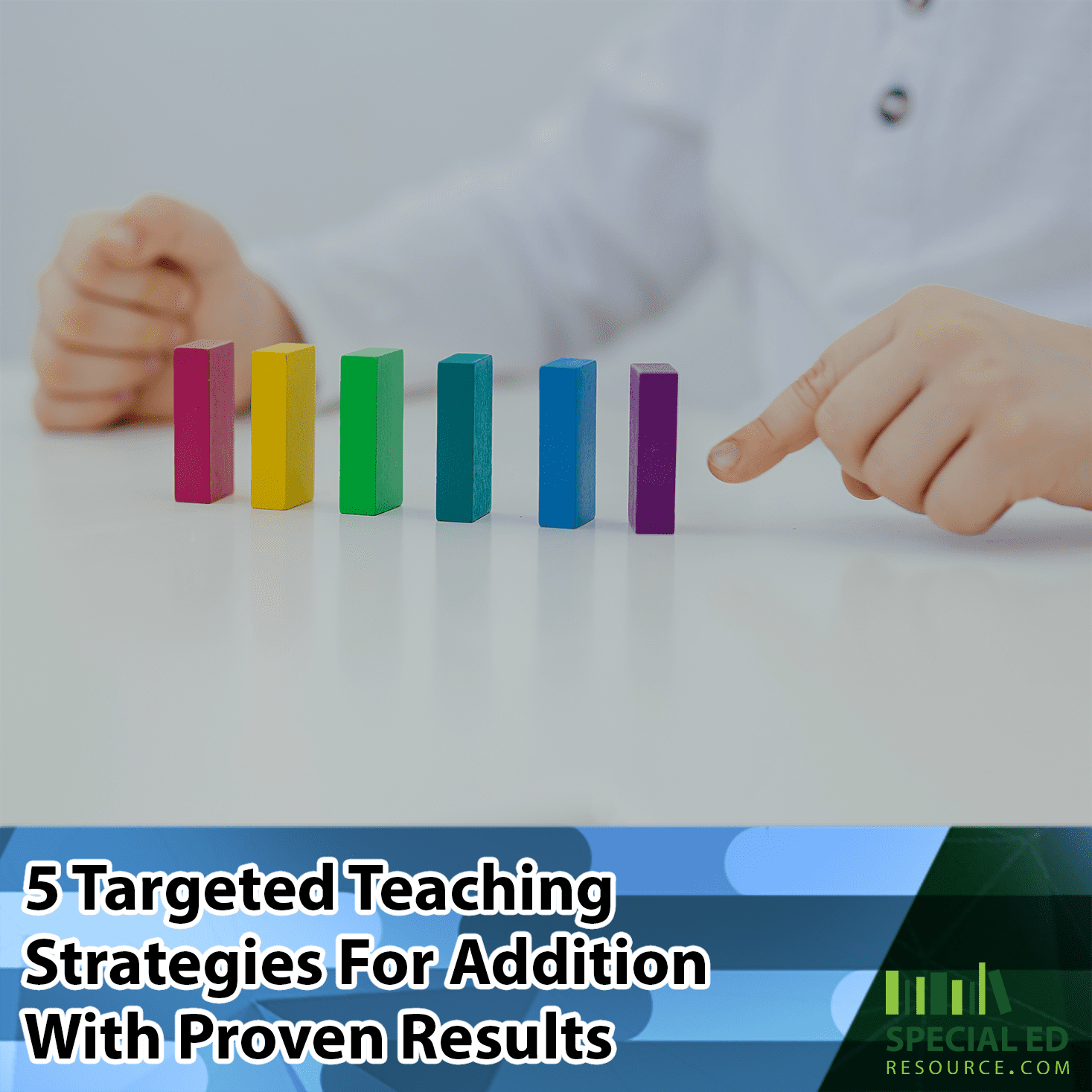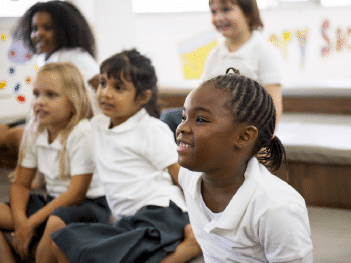Sarah, a second grade student, struggled to grasp the lesson Ms. Meagan was teaching at the front of the classroom. She was teaching strategies for addition, and they were learning how to add three-digit numbers.
Sarah couldn’t even remember if she ever learned to add two-digit numbers; suddenly, she was asked to add one-hundred-three and sixty-five. Her brain is spiraling, and she is so confused.
Ms. Meagan barely stops to breathe before going into larger numbers. Sarah feels hopeless as she looks around the class, watching her peers’ taking notes and appearing to understand the lesson with ease.
Teaching Strategies for Addition
Math can be a struggle for many of our students with learning disabilities. Not seeing “math calculation, math skill, or math reasoning” on every IEP at all grade levels is almost hard.
If the concept of addition is hard for your child, these different strategies will help. You can use any addition strategy with multiple different levels.
Whether your child is in first grade, third grade, or high school, the variety of addition strategies will give them plenty of practice that can make a big difference. Students with learning disabilities typically require repetition regardless of age or grade level.
#1 Hands-On Learning Strategies for Addition
Math is very abstract. For many kids, “seeing” math makes all the difference. One teaching strategy that stands out in math is hands-on learning.
Students with disabilities benefit most from successfully utilizing their senses to learn new skills and material. One of the best ways to start is the use of manipulatives.
What are manipulatives?
Manipulatives can be anything that will help your child visually see a math problem and provide physical touch to solidify the information in their brain.
Types of Manipulatives
You know your child the best. You understand what keeps your child’s attention for more than 10 seconds. Use items that will support your child’s knowledge of learning how to master the art of addition.
- Food items– m&ms, gummy bears, fruits, or vegetables
- Toys– cars, dolls, stuffed animals
- Balls– all different sizes
- Writing utensils– pencils, pens, crayons, or chalk
- Money– play or real coins
- Blocks or legos
- Manipulatives specifically designed to teach math concepts
How to Use Math Manipulatives?
Let young children practice math facts with sidewalk chalk in the driveway. Inside, use a small dry-erase board for math practice. These simple changes can be surprisingly effective.
With older kids, look into the Math-U-See program. This program has excellent manipulatives that illustrate algebra and geometry clearly.
Many students with disabilities need concrete examples and information that help them learn any skill. Students engage their brains through visual and tactile senses when using manipulatives.
If you provide a child with real coins, it will be easier for them to build foundational skills for simple problems such as one plus five.
Modeling how to use the manipulative is vital for helping your child learn to add. Showing your child and then verbalizing each step of what is occurring is essential for learning.
The more senses a student has heightened, the better he will be at learning the steps and process of adding numbers.
#2 Use Technology to Teach Addition
With the amount of technology, it is no wonder this teaching strategy is AMAZING for helping your child learn addition easily. There are plenty of online games you can search for to learn how to add single or multi-digit numbers.
The repetition, audio, and visual aids will help guide your student toward success.
You can use technology positively and not just for rewards. Incorporate some of these into regular homework sessions. Breaking up math sessions with game time and other activities lessens the tediousness of rote drills.
Always check in on their online activities. Read more in this article: Internet Safety What You Need to Know to Keep Your Child Safe.
#3 Worksheets and Graphic Organizers
Worksheets were always a go-to for me while working in the classroom. I loved using them because they provided visuals for students when asked to complete simple or complex math problems.
Worksheets can even be graphic organizers to guide students to break down word problems into manageable sections to finish.
You can use many ideas with worksheets, and the best part about this tool is that it makes it easier for students to become familiar with and more independent in math.
#4 Teach With Stories
Another way to help students add and subtract is to implement it within a story. You can do this by using the pictures and words within a book. Or you can have your students make up the story to go with the problem.
The more fun you make it, the easier it will be for the brain to process how to utilize math in everyday life. Here are some tips on getting started with math story problems.
#5 The Student as the Teacher
One of the best ways to help a child gain confidence as they are learning math is to have them teach what they’re learning to someone else.
If you have children close in age, you can have them teach each other. Otherwise, you be the student.
- Pretend you know nothing
- Ask lots of questions
- Ask for demonstrations
- Have your child give you homework
- Your child should correct your mistakes (so be sure to make some)
Will These Teaching Strategies for Addition Work for My Child?
Now, you might be thinking… You have tried these, and they didn’t work.
Or you can’t offer your child a technology choice because the behaviors of getting off the laptop are a struggle.
I hear you, and I understand.
Pick and choose what works best for your child. The important thing is to make learning fun. When you’re excited about a topic, so will your child. Give it a try. You might be surprised by the outcome!
For many adults, mere math brings back memories of misery. When it comes to helping your child with math, especially if your child is struggling, overcoming your math phobia can be challenging.
Take a deep breath and step back. Math is a skill like any other. No one is born “bad” or “good” at math. Sure, it comes easier to some people.
But, consistent practice and mastery of concepts will make any student “good” at math. The catch? If a child struggles with math, you must get creative to help them turn things around. It can be done!
Math may never be your child’s favorite subject, but it needn’t be a source of misery. You know your child best.
Keep going if one approach to a concept isn’t working. Try new ways until you figure out together the most effective way to master the topic.
Additional Resources for Your Child Struggling With Math
If math continues to be an ongoing struggle, consider one of the vast online special education resources available. Look into online tutoring – particularly if math has become a daily conflict between you and your child. A neutral third party can alleviate stress if your child is struggling with a new concept or has specific special needs.
Here are additional resources to check out:
- 27 Brilliant Summer Math Activities for Kids (That Doesn’t Feel Like Schoolwork)
- Understanding Dyscalculia: Important Signs To Look For In Your Child
- Academic Regression in School What You Need to Know as a Parent
- How to Improve Math Skills with 7 Simple Strategies













